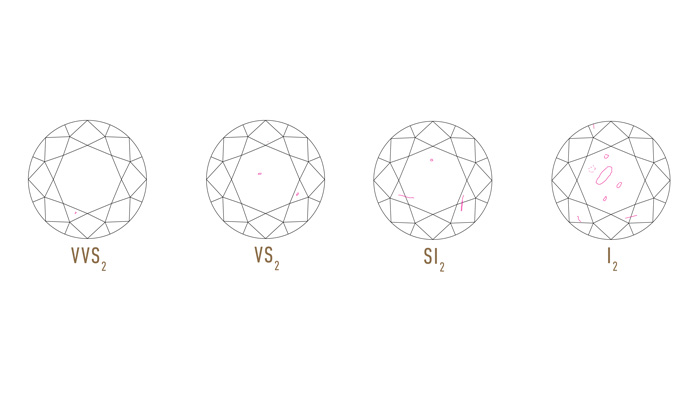Olivia and her future fiancé, Liam, visited their second jewelry store of the day. They’d only just started the process of choosing the ideal ring, and were looking for the very best diamond as the centerpiece! Olivia knew she wanted a diamond around one-and-a-half carats, and Liam told the saleswoman he’d like the stone to be “as perfect as Olivia”.
“This one is 1.3 carats,” the saleswoman explained, showing a loose diamond in a small, folded paper, “but it’s internally flawless!” The couple hadn’t seen an internally flawless stone yet, and they were intrigued. Liam thought the stone would suit Olivia wonderfully. But looking at the price tag, Olivia was skeptical, thinking, I don’t see any difference between this diamond and the others. Why should we pay so much more for it?
Diamonds require very specific conditions for their formation: extremely high pressures (beneath 90 miles of dense rock or places where the Earth’s plates are forced together) and blistering temperatures (usually roughly 2000°F). While they normally aren’t made from coal – in fact, most diamonds formed before land plants existed! – they do require lots of carbon in their environment, since that’s what they’re composed of. As the diamond grows, these conditions must be kept constant. Any change in pressure, temperature, or concentration of carbon can cause interruptions in growth, or even the crystallization of other minerals inside the newborn diamond. And since nature isn’t a carefully monitored pressure cooker, almost every diamond has some kind of internal feature formed during the growth process!
The highest clarity possible in a diamond is called flawless, denoted by the symbol F or FL, followed by internally flawless, with the symbol IF. A flawless diamond must have grown evenly so as to not form any visible irregularities under 10x magnification, the standard at which diamonds are graded. The difference between flawless and internally flawless comes down to the diamond cutter and the stone’s handling afterward: one single scratch, nick, or even a tiny area of lesser polish will cause a once-flawless diamond to receive an IF grade. If a flawless diamond is set into jewelry, in almost all cases (the exception being very important stones) the diamond will be considered only internally flawless, since the setting process could have caused one of these tiny blemishes!

Diamond clarity plots, from GIA.edu.
The grades below IF gradually become more and more included, and therefore more and more common. VVS grades will only have minute inclusions – tiny crystals called “pinpoints”, nearly indistinguishable even with a jeweler’s loupe. VVS stands for “very very slightly included”. The next pair of grades, the VS (you guessed it – “very slightly included”) grades, can have minor inclusions. Tiny crystals or cracks (called feathers) can be present, but are usually positioned toward the stone’s edges. Below VS are the SI (“slightly included”) grades, which can have larger crystals, feathers, or a combination of these features. You’ll also commonly see inclusions caused by changes in the diamond’s growth direction, called twinning wisps. These inclusions may be positioned towards the center of the diamond, and will be quite noticeable to a trained professional under magnification.
The next grades are the I (“included”) grades, of which there are three. I-1 and I-2 diamonds have large inclusions, usually feathers, positioned in a way that they are very obvious under magnification. I-3 diamonds are full of inclusions, often to the point that the stone no longer appears transparent! All three I grades can affect the appearance of the diamond to the naked eye, and even an untrained observer may notice the inclusions in an I-2 or I-3 diamond. Below the I grades are severely included diamonds, which for a long time were simply used for industrial purposes, but have recently received a surge in popularity for their unique, rustic appearance. You may hear these stones referred to as “industrial diamonds”, “salt-and-pepper diamonds”, or even “interstate diamonds”! (Okay, fine, that last one is a joke. Think I-5, I-15… You get the idea.) Industrial quality diamonds are very common, especially in small sizes.
Olivia and Liam were shown a few more diamonds at the jewelry store, and narrowed their choices down to two: the internally flawless diamond from earlier, and an SI-1 diamond that was much less expensive. Side-by-side, they looked the same; it was only when the saleswoman showed the two stones in the microscope that Olivia was able to see a difference. How should they choose? Clarity is all about personal preference! The couple had a relatively tight budget, so the SI-1 diamond was a better fit for them (despite Liam’s protests). But another customer, a collector of rarities of all kinds, thought the internally flawless diamond would make a perfect pendant!

